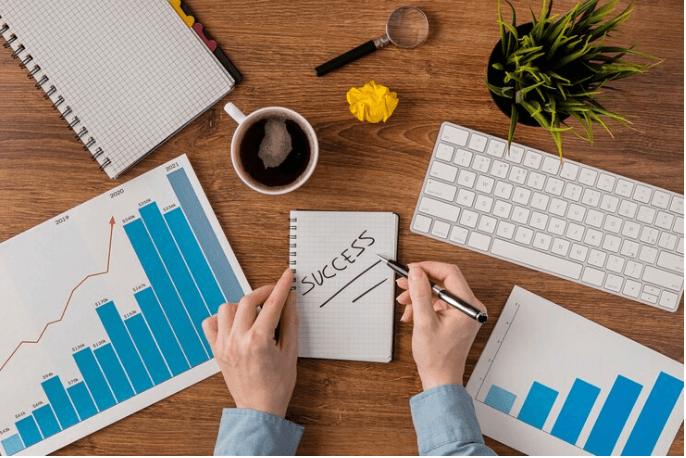Pharmaceutical Cleaning Validation Market: In-Depth Analysis and Future Outlook
Pharmaceutical Cleaning Validation Market Overview
The Pharmaceutical Cleaning Validation Market has become an integral part of quality assurance in pharmaceutical manufacturing. As of 2024, the market is valued at approximately USD 13.2 billion and is projected to grow at a CAGR of 8.6%, reaching an estimated USD 24.5 billion by 2032. This upward trajectory is driven by the increasing regulatory pressure, rising complexity of pharmaceutical formulations, the shift toward multiproduct manufacturing facilities, and the expansion of biopharmaceutical production.
Regulatory agencies such as the U.S. FDA, EMA, and WHO have imposed stringent requirements on manufacturers to ensure cleaning procedures are validated and verified. The goal is to eliminate cross-contamination, maintain product purity, and ensure patient safety. Cleaning validation plays a key role in Current Good Manufacturing Practices (cGMP) and has become indispensable for compliance and operational efficiency.
Key drivers of market growth include:
The increased outsourcing of manufacturing services to Contract Manufacturing Organizations (CMOs) and Contract Development and Manufacturing Organizations (CDMOs).
The growing biologics and biosimilars sector, which requires more rigorous validation due to the sensitivity of active ingredients.
The rise of automated validation systems, software-driven tracking, and smart analytics tools.
Heightened demand for multi-use production lines, particularly in small-batch personalized medicine manufacturing.
Technological innovations in equipment cleaning, real-time residue detection, and documentation systems are propelling market expansion. Moreover, data-driven software platforms and Internet of Things (IoT) integration for cleaning process monitoring are gaining traction.
COVID-19 significantly accelerated interest in cleaning validation, especially for vaccine production facilities. Increased global scrutiny and public health concerns have prompted firms to invest more in reliable and repeatable cleaning protocols.
However, challenges persist. These include the high initial cost of validation systems, the lack of trained personnel, and lengthy qualification times. The market also faces regulatory variability across regions, posing hurdles for companies operating globally.
Overall, the pharmaceutical cleaning validation market is poised for robust growth, bolstered by regulatory stringency, process automation, and the global pharmaceutical industry’s continuous expansion.
Pharmaceutical Cleaning Validation Market Segmentation
The pharmaceutical cleaning validation market can be segmented into four key categories:
By Product Type
By Validation Type
By End User
By Region
Each segment is elaborated below.
1. By Product Type (200 Words)
The product-based segmentation includes Detergents & Cleaning Agents, Analytical Instruments, Software & Validation Tools, and Consumables.
Detergents & Cleaning Agents dominate the market due to their universal requirement in manual and automated cleaning processes. They include both aqueous and solvent-based agents tailored for various residues, from API films to biological remnants.
Analytical Instruments such as HPLC (High Performance Liquid Chromatography), TOC (Total Organic Carbon) analyzers, and conductivity meters are crucial for detecting residual contamination. The increasing demand for real-time residue analysis is boosting the adoption of high-end instruments.
Software & Validation Tools are experiencing rapid growth. These systems help maintain digital cleaning records, automate reporting, and provide trend analysis, aligning with ALCOA+ data integrity principles.
Consumables like swabs, rinse solutions, and filters are widely used in sampling and play a recurring role in validation workflows, supporting consistent demand.
Advancements in sensor miniaturization and connectivity have made analytical and software tools more affordable and scalable, broadening market access.
2. By Validation Type (200 Words)
This segment comprises Prospective Validation, Concurrent Validation, and Retrospective Validation.
Prospective Validation holds the largest share. It involves validating cleaning procedures before regular production begins. Often applied during new facility setup or after a product changeover, it is critical for regulatory audits.
Concurrent Validation is used when prospective validation is impractical, allowing manufacturers to validate cleaning processes while production is ongoing. It’s frequently adopted by smaller firms due to time and cost constraints.
Retrospective Validation applies historical production and cleaning data to justify current cleaning practices. Though less common today due to evolving regulatory requirements, it remains relevant in legacy systems.
The shift toward risk-based validation approaches and continuous process verification (CPV) is encouraging hybrid models, integrating real-time data from IoT sensors to support more flexible validation strategies.
3. By End User (200 Words)
End users in this market include Pharmaceutical Companies, Biopharmaceutical Manufacturers, Contract Manufacturing Organizations (CMOs), and Academic & Research Institutes.
Pharmaceutical Companies are major consumers due to their need for repeated batch cleaning validation across multiple drug types and forms.
Biopharmaceutical Manufacturers are witnessing the fastest growth, driven by the complexity and sensitivity of biologic products, which necessitate highly specialized cleaning validation protocols.
CMOs benefit from increased outsourcing trends. Their services must comply with multiple clients’ specifications and regional regulations, requiring versatile and stringent validation strategies.
Academic & Research Institutes use cleaning validation primarily in small-batch R&D environments, and their demand is more niche but growing, especially in early-stage development setups.
CMOs, in particular, are evolving into major stakeholders due to increasing dependency on them for scale-up, regulatory compliance, and risk mitigation. This trend is expected to persist as smaller biotech firms enter the market.
4. By Region (200 Words)
Geographically, the market can be divided into North America, Europe, Asia-Pacific, and Rest of the World (RoW).
North America leads the market due to the strong regulatory environment enforced by the FDA and the dominance of major pharmaceutical companies. The region’s inclination toward automation and digital validation platforms further strengthens its leadership.
Europe is a mature market supported by regulatory frameworks like those from the European Medicines Agency (EMA). The region is also investing heavily in sustainability and green cleaning agents.
Asia-Pacific is emerging as the fastest-growing market, with countries like China and India becoming global pharma hubs. Cost-effective labor, growing R&D infrastructure, and supportive government policies make APAC attractive for both local and international firms.
Rest of the World (RoW), including Latin America, the Middle East, and Africa, is witnessing growing interest due to improving healthcare infrastructure and increasing investments in pharmaceutical manufacturing.
Multinational corporations are increasingly establishing validation centers of excellence across APAC and Europe, underscoring the need for localized compliance and capabilities in a globalized supply chain.
